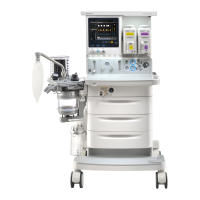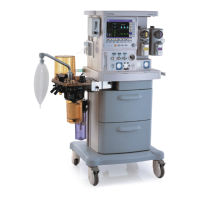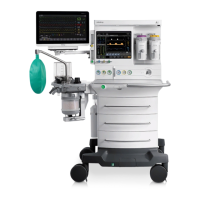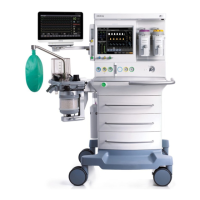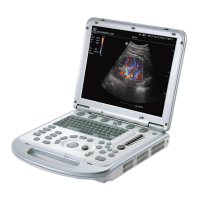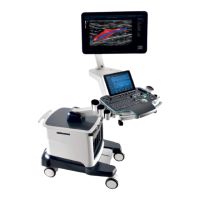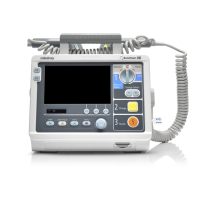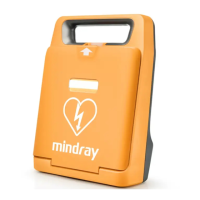5-1
5 Troubleshooting
5.1 Introduction
In this chapter, anesthesia machine problems are listed along with possible causes and
recommended actions. Refer to the tables below to check the anesthesia machine, isolate
and eliminate the problems.
Once isolating the part you suspect defective, refer to 6Repair and Disassembly and 7Parts
to disassemble the equipment and repair and replace the defective part.
5.2 Technical Alarm Check
Before troubleshooting the anesthesia machine, check for technical alarm message. If an
alarm message is presented, eliminate the technical alarm first.
The following sections detail how to troubleshoot technical alarms related to the ventilator
and electronic flowmeter. For detailed information on possible causes and actions for
technical alarm messages of other modules, refer to the Operator’s Manual.
5.2.1 Ventilator Related Alarms
In the “Level” column of the following table, the default alarm level is indicated: H for high,
M for medium, L for low and P for prompt message.
Alarm message Level Possible cause Recommended action
RT Clock Need
Reset
H There was no button cell
available in the system, or
the battery had no capacity.
1. Replace with a new button cell.
2. If the problem persists, replace
the main control board.
RT Clock Not
Exist
H RT chip malfunction. 1. Restart the machine.
2. If the problem persists, replace
the board.
Low Battery
Voltage!
H The battery voltage was too
low.
1. The system is operational.
Connect the AC mains immediately.
2. Check if the battery is normal.
3. Check if the charging circuit is
normal. If not, replace the power
board.
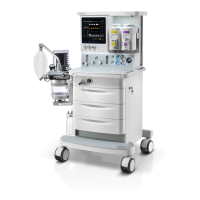
